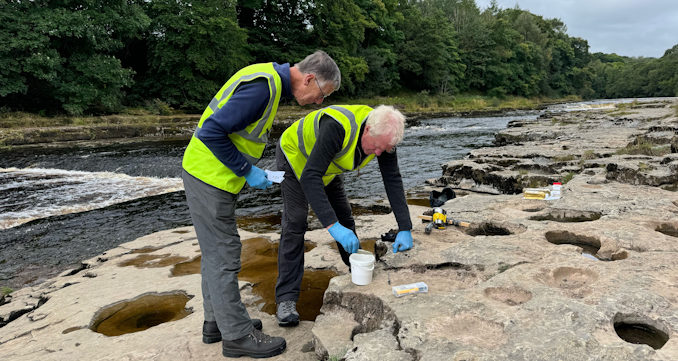
The River Ure at Aysgarth Falls did not meet the minimum standard for safe bathing when tested by campaigners.
Tests were carried out at 45 sites along the river by members of Stop Ure Pollution (SUP) on August 21 this year.
A public meeting organised by SUP at Leyburn Methodist Church Hall on Tuesday evening heard from Charlotte Simons, of the Yorkshire Dales River Trust (YDRT), who worked with SUP on the testing.
She reported that 20 out of those sites tested along the river and on some tributaries0 had E. coli concentrations above the levels needed to meet the standard for safe bathing.
She said that the E. coli levels were above that safe bathing level from Bainbridge until Spennithorne, with increased levels also at Masham Bridge and Ripon North.
The highest levels were at Lord’s Bridge near Wensley.
Although many of the tests came back with high levels of e-coli, Mrs Simons added: “None of the results are incredibly high compared to findings on the Wharfe and the Nidd under similar conditions though probably a bit surprising for low flow conditions.
“The days preceding the sampling had been mostly dry with only light rain in places so the levels of E. coli were not influenced by agricultural runoff or combined sewer overflows due to wet weather.”
She added that she was particularly concerned about the situation at Aysgarth Falls because it could be considered for designated bathing status due to its popularity with visitors during the summer.
She praised all the volunteers, many of whom were at the meeting, for their efforts.
Chairman of SUP, Prof Richard Loukota, pointed out that the group had only been formed in July and yet 41 of its volunteers had taken part in the testing of the river water from Lunds to where the Ure joins the Ouse near Boroughbridge.
Mrs Simons said that the testing had taken place that morning with all the samples from the SUP teams delivered to her at Masham by 2.30pm.
The tests also included those for phosphates, ammonia, nitrites, temperature and conductivity and Mrs Simons told the meeting that overall the results reflected a good quality river, although further testing was required on the Skell and Tutt tributaries.
All these results are on show at the exhibitions at the Quaker Meeting Houses in Leyburn (Thursday October 3 from 2pm to 4pm, October 4-5 from 10am to 4pm) and Bainbridge (October 3-5 from 10am to 4pm).
The YDRT and SUP are organising another river length testing soon when the river flow is high.
But due to the E. coli results, Mrs Simons stated that there would also need to be another testing when the river water was low due to the high levels between Bainbridge and Spennithorne.
Checks would also have to be made below the water treatment plant at Redmire.
The testing of samples at low and high levels is carried out at an independent laboratory and paid for by Yorkshire Water.
Prof Loukota told the meeting that SUP wanted to raise funds to carry out further testing itself, including the Fluidion system used to test the Seine during the Olympics.
SUP had joined the Sewage Campaign Network and, by cooperating with other river groups throughout the country, was involved in the discussions about the Government’s new water bill and the possibility of water companies being placed under special administration.
Experts say E. coli can get in watercourses from a range of sources, including contamination from sewage or animal waste.


Be the first to comment